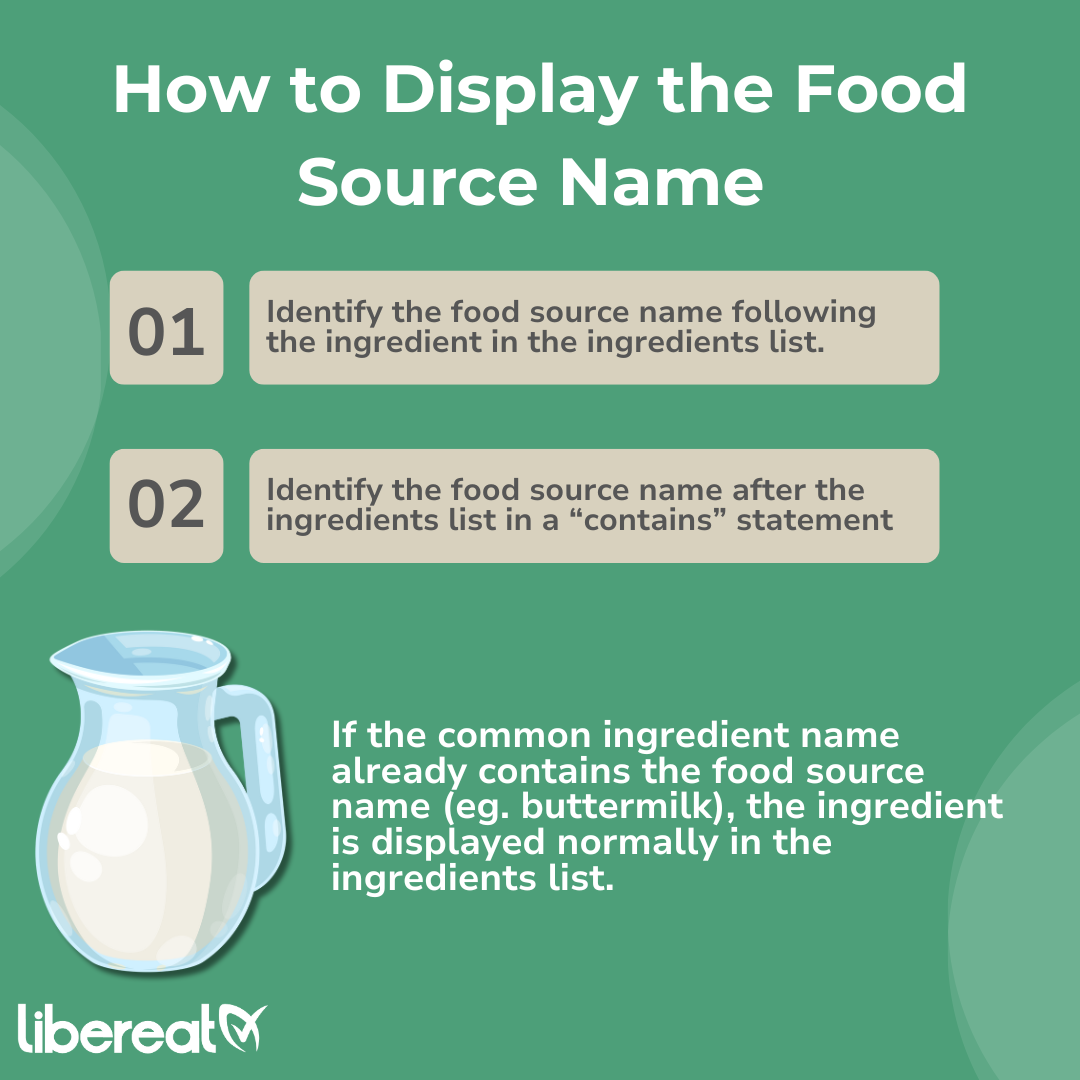Soybean allergy, more commonly known as a soy allergy, is one of the most common food allergens in the United States. Food Allergy Research & Education (FARE) estimates that it affects over 44,000 infants. Soybean allergy prevalence in adults is lower but still significant in the U.S.
With the allergy potentially affecting millions nationwide, food businesses are under increasing pressure to comply with food law and ensure they correctly declare and communicate allergen information with consumers.
In this article, we will discuss how a soybean allergy occurs, relevant food safety legislation to be aware of, and how LiberEat’s food safety technology can help businesses avoid errors with their allergen food labels.
What Is a soy allergy?

Please Note: LiberEat’s content is not intended to be a substitute for professional medical advice. You should always take precautions and use appropriate judgment to protect yourself and others under your care concerning food allergies.
A soybean allergy occurs because the body’s immune system mistakenly identifies proteins found in soy as a harmful foreign substance – an antigen.
In response, the immune system releases a protein called Immunoglobulin E to protect itself. As part of this process, a chemical known as histamine is released, which is the cause of typical allergy symptoms. This can include:
- Hives, flushed skin, or rashes
- Swelling of the face, tongue, or lips
- Vomiting or diarrhea
- Difficulty breathing
- Feeling dizzy or lightheaded
- Difficulty breathing
- Abdominal cramps
One of the most dangerous symptoms of an allergic reaction is anaphylaxis.
Anaphylaxis occurs when blood pressure suddenly drops, causing the body to go into shock. Swelling of the tongue and throat can result in breathing difficulties that can potentially be fatal. As there is no way of predicting the severity of an allergic reaction, undeclared allergens on food packaging can lead to devastating consequences in the hands of food-hypersensitive consumers.
What is a major food allergen according to the FDA, and what is required on a food label?
In 2004, Congress passed the Food Allergen Labeling and Consumer Protection Act (FALCPA), identifying eight food allergens responsible for most allergic reactions in the country. A ninth allergen, sesame, was added on January 1st, 2023, under the Food Allergy Safety Treatment Education and Research Act (FASTER), and these major allergens have been collectively known as the big nine allergens. The big nine allergens are comprised of:
Being identified as a major allergen means these nine foods are subjected to strict labeling requirements to ensure allergen labels are correctly displayed on food packaging.
Under FASTER and FALCPA labeling requirements, some food businesses are legally required to declare soy if present in packaged food or dietary supplements. The food source name must be clearly shown when displayed on food packaging. This can be done either in parenthesis following the ingredient in the ingredients list or immediately after the ingredients list in a “contains” statement.
Highly refined soybean oil is generally exempt from labeling because it does not contain allergenic soy proteins. However, this exemption is a nuance under FALCPA.

Some food businesses run the risk of allergenic food proteins unintentionally transferring to other foods, which is known as cross-contact. This may occur due to hygienic issues such as poorly washed surfaces and utensils, or improper storage of allergenic foods. The risk of cross-contact is particularly high if different foods are being prepared in the same environment.
While voluntary, the implementation of precautionary allergen labeling (PAL) is an effective way to warn consumers of the potential unintentional presence of allergens. This is usually done by including a ‘may contain’ statement near the ingredients list of affected products. You can read more about PAL in our dedicated article.
What is a food recall?
Businesses that fail to comply with food labeling requirements will likely be subjected to a product recall. Food recalls occur if the food is contaminated, presents a risk of injury or illness, or is grossly deceptive.
In the United States, the manufacturer typically voluntarily carries out these recalls by following the guidance in Code 21 CFR 7. If not voluntarily recalled, the FDA has the authority to issue a mandatory recall under section 423 of the Food Drugs and Cosmetic Act, added to the FD&C Act under section 206 of the Food Safety Modernisation Act on January 4th, 2011. You can learn more about why recalls occur at our dedicated food recall page. The FDA enforces compliance through inspections or guidance documents like the Food Code.
Businesses may face many difficulties stemming from recalls. When a food recall occurs, the operation must inform regulatory bodies, consumers, and parties across the supply chain to ensure the products are effectively recalled.. These activities will be time-consuming and take staff away from other essential tasks.
Seizing the affected products may also be incredibly costly. One figure states that the average food industry recall cost is $10 million. For many businesses, this is simply too high for the sustainability of their brand.
Given the potential consequences of incorrect food labeling, food businesses must be more vigilant than ever in their allergen management and food safety processes.
We hope this article has clarified the dangers businesses face and the various laws regarding food safety. To learn more, visit our dedicated U.S. Big Nine Allergens Hub.
While many businesses strive to deliver the best food safety experience for consumers, manual checking processes for product data are the industry standard and are susceptible to human error. With LiberEat’s food safety technology, we can act as a second line of defense, seamlessly integrating with your existing food safety processes to ensure that no errors go unnoticed.
LiberEat Allergen Detection Software
LiberEat’s food safety software helps prevent errors in allergen data on supplier specification, website and app data, food packaging, and menus. This can help protect your customers from the major allergens—find out more about these with our allergen information hub.
Correctly managing and reviewing your allergen data is essential for keeping you and your customers safe.
Errors in allergen data can cause potentially devastating allergic reactions and expensive product recalls. Give yourself peace of mind, and contact us to learn more about how LiberEat can help protect your business.

